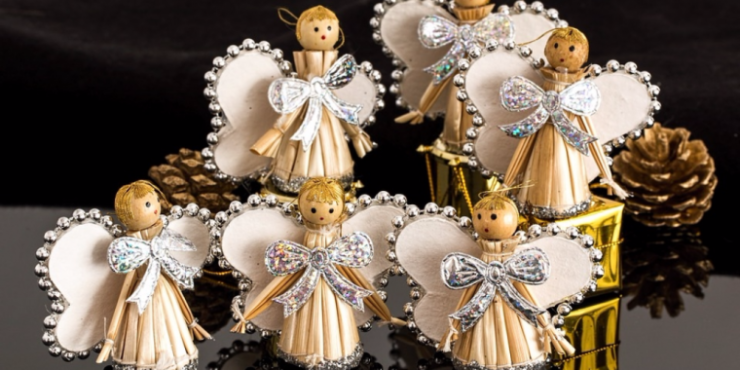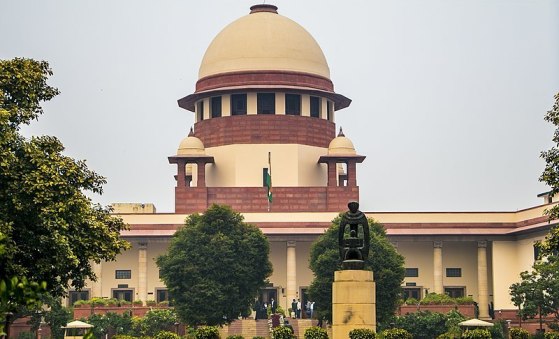I love Christmas. I suspect my wife now hates it, since I started writing this book on Christmas history. Here are eight of my favourite festive facts that made Mrs Kerensa roll her eyes...

1. King Herod had a wife called Doris. He had 10 wives (not all at the same time), including a Cleopatra and two Mariamnes. He killed one wife, and her mother, after making them testify against each other, and he drowned his teenage brother-in-law at a party. Herod was so worried that people wouldn't mourn him (and they wouldn't – he was a terror), that he ordered the death of much-loved locals, as soon as news spread of his own demise – that way people would really have something to cry about. Thankfully, soldiers tasked with carrying out this wish decided not to, when Herod finally passed. No reported tears were shed.
2. There was no donkey in the Nativity story. Sorry kids. It makes a great outfit for the primary school, and to be honest it makes sense – pregnant Mary had to get from Nazareth to Bethlehem somehow. It's just there's not one mentioned and she could have just as easily travelled by horse or cart. There is of course a donkey towards the end of Jesus' life, on Palm Sunday, so perhaps a donkey at the start (with its cross-shape in the hairs on its back) is a perfect narrative mirror. We like the song Little Donkey of course, though the song's writer (Geordie folk-singer Eric Boswell) preferred his more humorous animal songs, such as I've Got a Little Whippet.
3. Jingle Bells was a Thanksgiving song. And written for a church. And the first song in space. Whoa. Too much. But yes – it was written for a church Sunday school to keep the children entertained during Thanksgiving 1857. Its galactic debut was a century later, and part of a space prank. Astronauts Wally Schirra and Thomas P Stafford sent a message from Gemini 6 to Mission Control reporting '...an object, looks like a satellite going from north to south, probably in polar orbit... I see a command module and eight smaller modules in front. The pilot of the command module is wearing a red suit...' They then broke into song, backed by a harmonica and sleigh bells they'd somehow smuggled on board.
4. Don't blame modern secularism for America's 'holiday season' – blame Cromwell. Oliver Cromwell banned Christmas in England in the 1640s, and while it came back a decade and a half later, the Puritans who sailed for America managed a longer ban, even if it wasn't countrywide. Christmas failed to get a footing in the New World and while some churches celebrated it, they couldn't agree if it was a feast day, a fast day or a normal day. So Thanksgiving snuck in, like Harvest Festival but with a better origin story about hungry pilgrims, firmly embedding it in American culture. Christmas eventually became popular, but by the 20th century it sat alongside Thanksgiving, Jewish Hanukkah and African American Kwanzaa. You could argue that the 'holiday season' covers Christian festivals from Advent to Epiphany, really it represents the fact that the American Christmas was a little late to the holiday party.
5. St Nicholas was the first to use an automatic door. According to legend, so holy was the bishop, that when he visited the Room of the Last Supper, the church doors swung open to greet him. Nicholas was even a pious baby: tales tell of him abstaining from breastfeeding on the two customary fasting days each week, and the infant would only take from the right breast, as he was so loyal to God's right hand.
6. The man who popularised Santa also brought us Gotham City and the Knickerbocker Glory. Washington Irving was the world's first international bestselling author, penning The Legend of Sleepy Hollow and Rip Van Winkle. He also wrote a spoof history of New York under the pseudonym Diedrich Knickerbocker (inspiring the famous dessert, plus the English nickname for ladies' undergarments, thanks to UK illustrations not in the US version). The book told of the Dutch settlers' favourite saint – Nicholas – flying over treetops 'in that self-same wagon wherein he brings his yearly presents to children'. Irving also wrote a travelogue of a trip to England, dropping in at the Nottinghamshire village of Gotham. He nicknamed New York 'Gotham City', long before Batman moved in. That Midlands trip also featured a Christmas stay in a Birmingham manor house and Irving's cosy account of his festive stay inspired Dickens' A Christmas Carol.
7. Thank Dickens and the Mini Ice Age for our 'White Christmas'. The first eight Christmases of Dickens' life were white ones. The Thames froze, and 1816 was so cold that it was known as 'The year without summer', or 'Eighteen hundred and froze to death'. That summer was so bad that Byron's writing retreat was rained off, so he encouraged his guests to write scary stories: Mary Shelley wrote Frankenstein, John Polidori wrote the first vampire fiction. Dickens was only four, but grew up to remember those snowy winters, making them the backdrop to Scrooge's Christmas. By contrast, A Christmas Carol was released during one of the mildest Decembers on record – so readers harked back to the ones they used to know...

8. One bishop gave us 'Nine Lessons and Carols', a classic Christmas ghost story and Land of Hope and Glory. Bishop Edward Benson, later Archbishop of Canterbury, noted in 1880 that Christmas had become a boozy occasion. To lure drunks from pubs to Cornwall's nearly-built Truro Cathedral, he created a new Christmas Eve carol service. He also had the idea for ghost story The Turn of the Screw, written up by his friend Henry James. And while he didn't pen Land of Hope and Glory himself, his son did; another son wrote the Mapp and Lucia novels. His main influence though? To revive interest in glorious hearty carol-singing – and putting it back in church.
Paul Kerensa is author of 'Hark! The Biography of Christmas', published in 2017 by Lion Hudson, £7.99.




